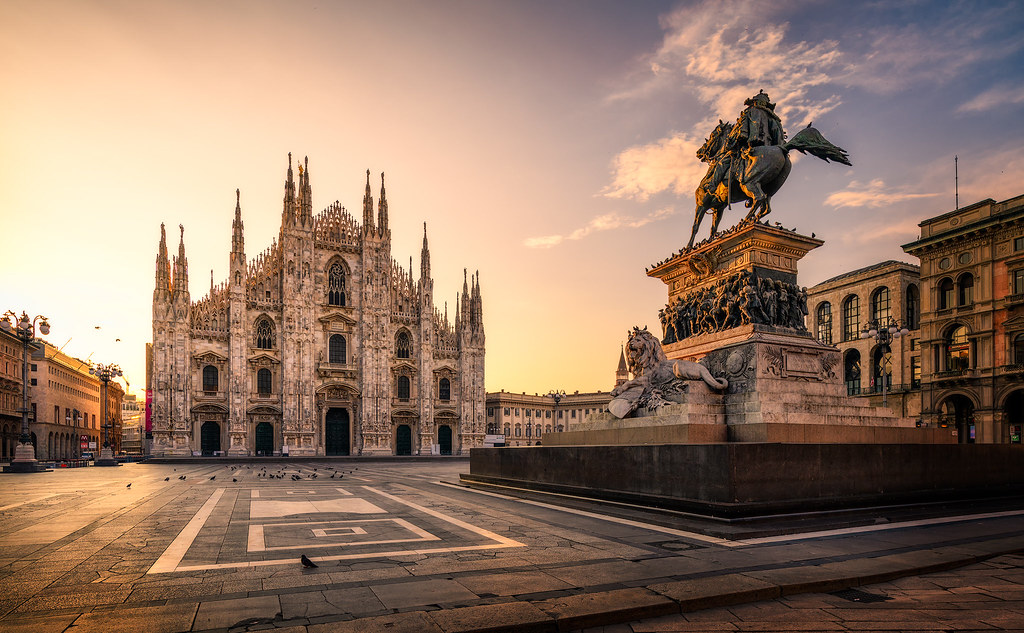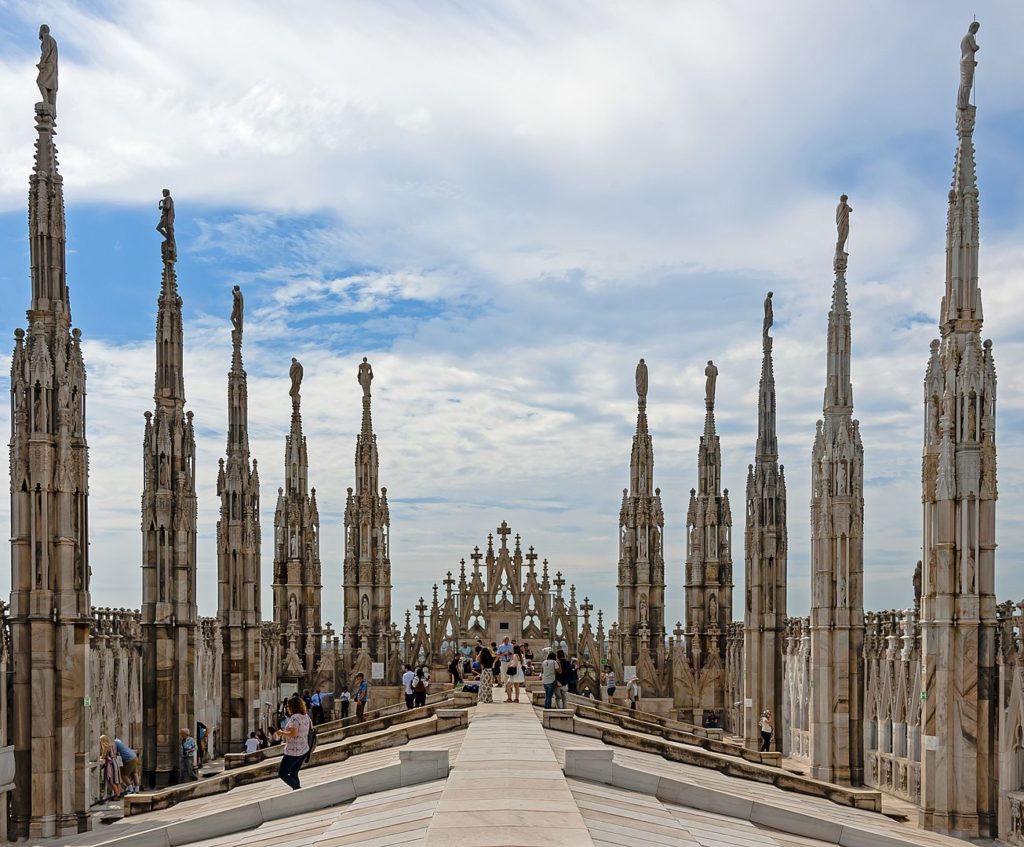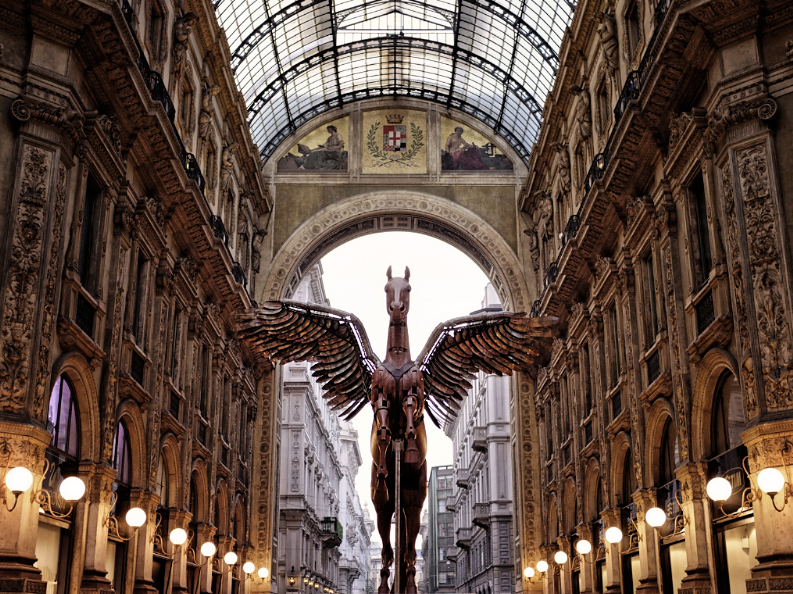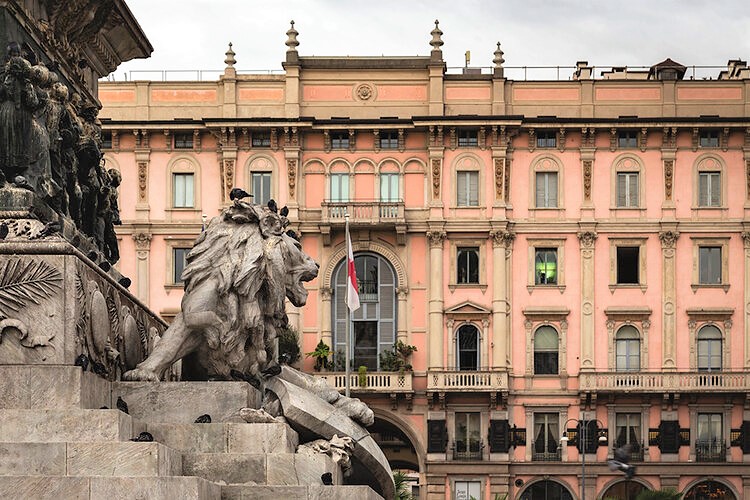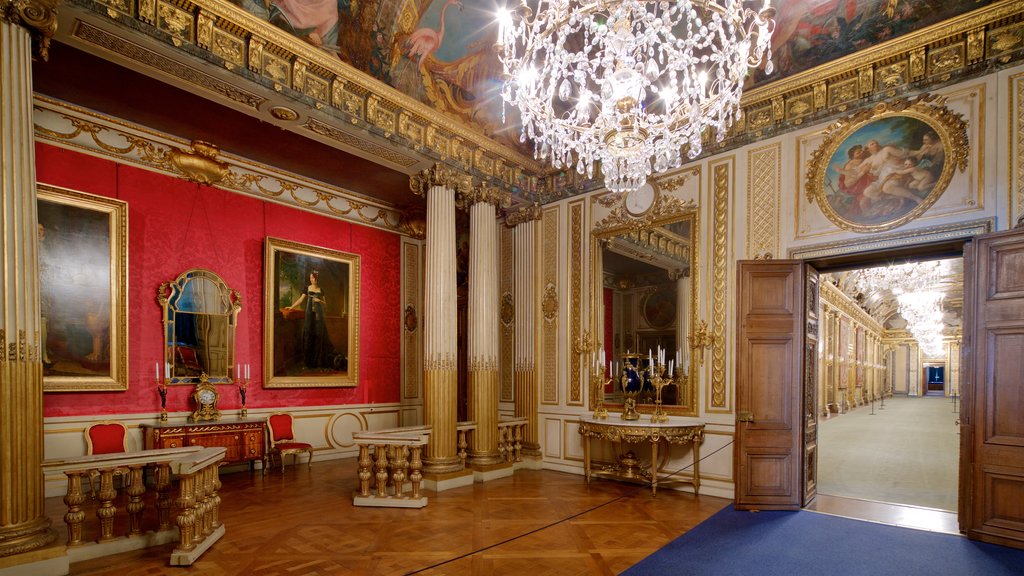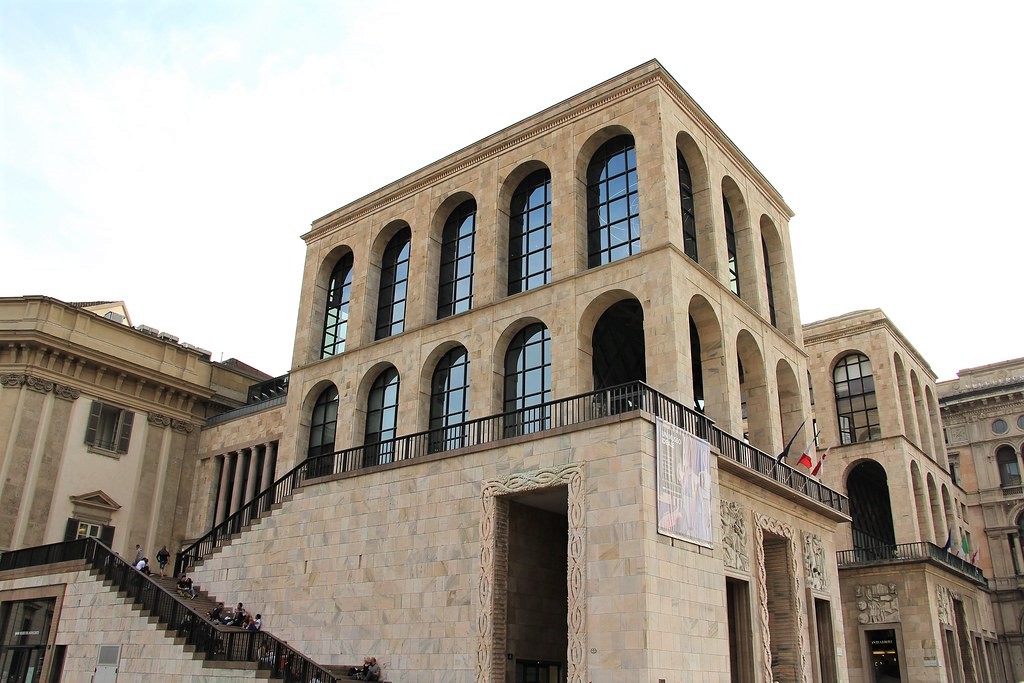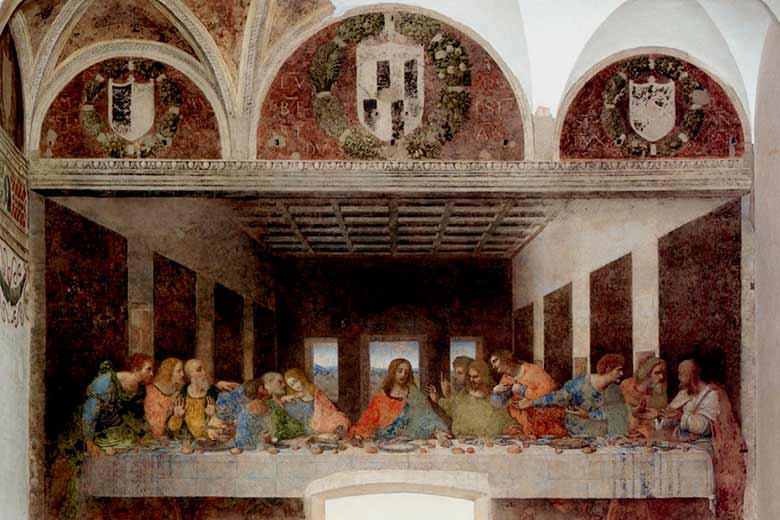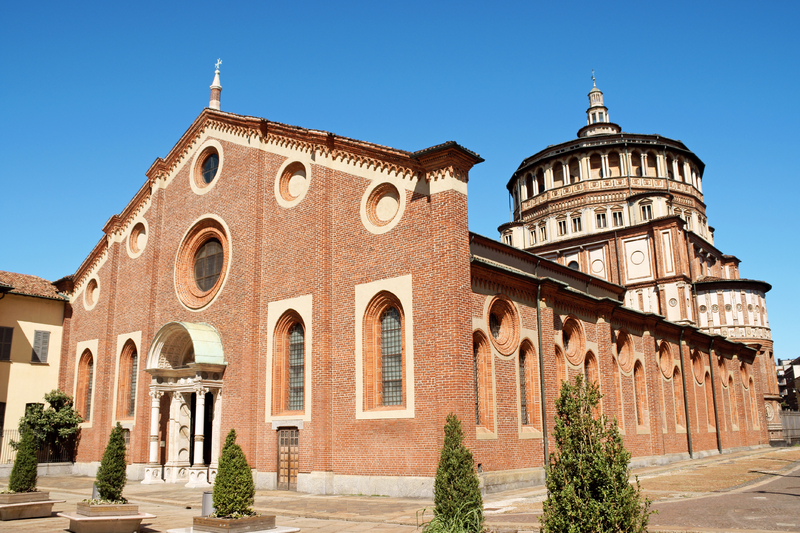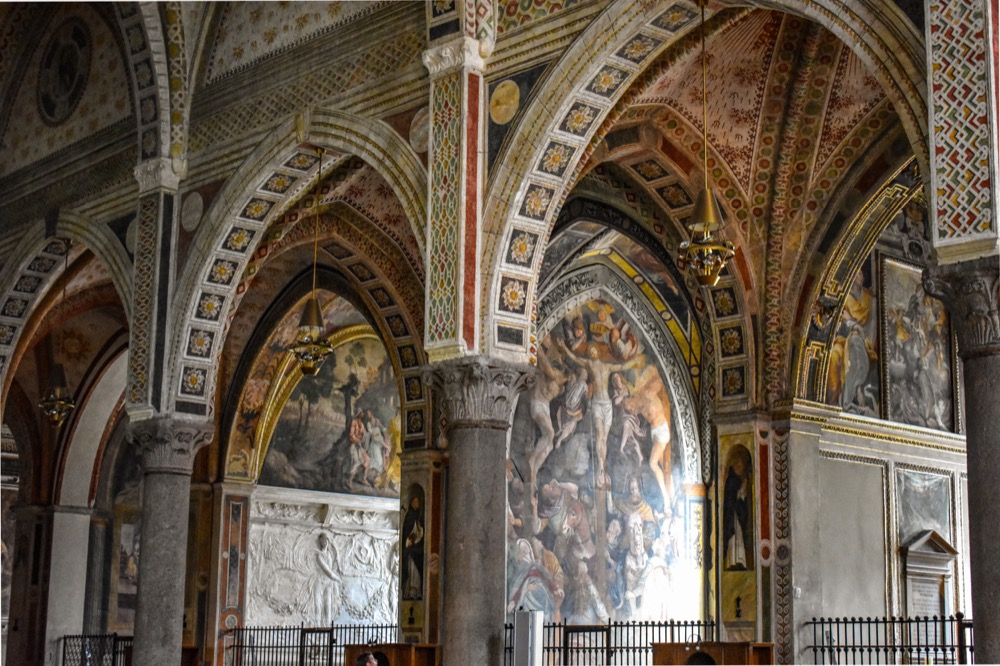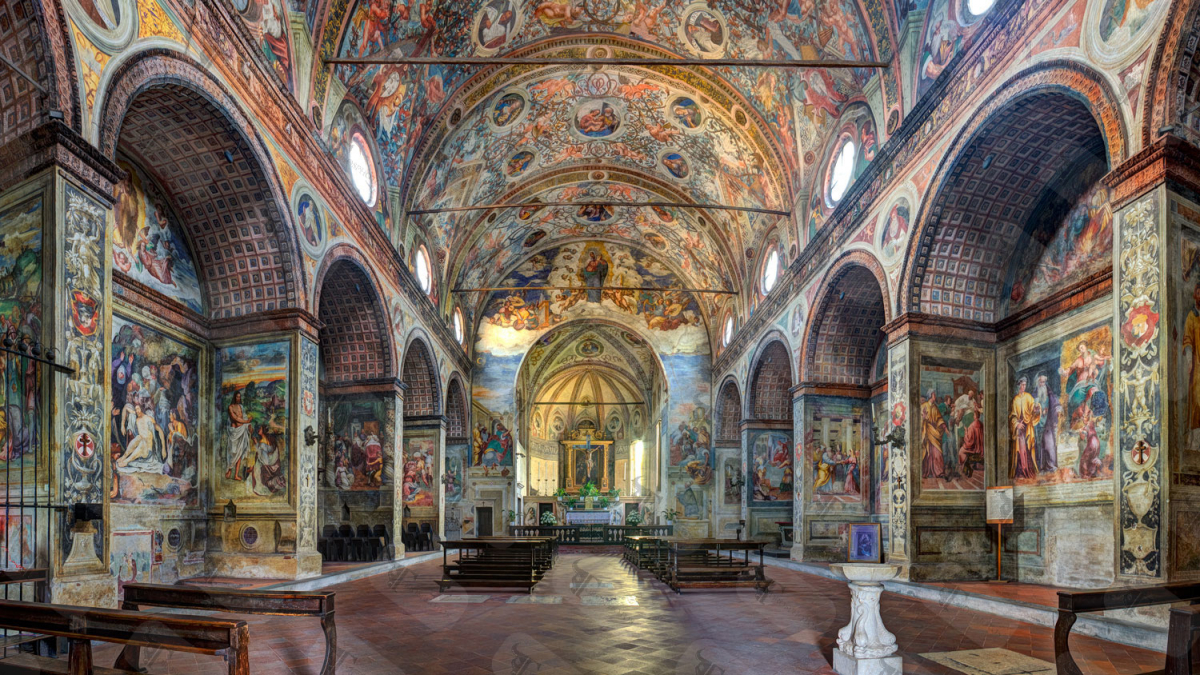Milan—Milano, if you want to sound effortlessly chic—is the capital of the Lombardy region in northern Italy. Nestled between the Ticino and Adda rivers and sitting just north of the Po River, this stylish metropolis rests 400 feet above sea level, with the Alps occasionally photobombing the skyline. Often outshone by the romanticism of Venice, the grandeur of Rome, or the rustic charm of Tuscany, Milan holds its own as Italy’s second-largest city and a financial force to be reckoned with. Before becoming part of unified Italy in 1860, Milan was passed around like vintage couture—claimed by several wealthy dynasties who each left their mark.
Sure, Milan isn’t the capital of Italy, but it is the unapologetic diva of fashion. As one of the world’s “Big Four” fashion capitals, it’s where runways catch fire in February and September during Milan Fashion Week. With homegrown legends like Versace, Prada, Dolce & Gabbana, and Armani, it’s no surprise that Milan is where fashion comes to flex. But the city isn’t all catwalks and cappuccinos—art and architecture play lead roles too. Where else can you catch a glimpse of Leonardo da Vinci’s The Last Supper and then sip an espresso while admiring the towering Gothic Duomo?
A Brief History of Milan
Milan’s history is as layered as a well-constructed lasagna (and equally satisfying). For centuries, it has served as Italy’s financial nerve centre, which explains the abundance of opulent buildings shaped by architectural movements from the Renaissance to the Neoclassical. Unlike cities that cling to a single historic style—looking at you, medieval Siena—Milan is an architectural mixtape. Although the city endured heavy bombing in World War II, its resilience is stitched into every restored palazzo and shimmering skyscraper.
During the Renaissance, Milan wasn’t just a pretty face—it was a serious player in European trade, known for its silk, steel, and steely ambition. Acting as a bridge between northern Europe and the Italian peninsula, Milan became an economic and political heavyweight. Milanese pride runs deep; many here consider their city the moral capital of Italy. That’s not just a marketing slogan—it’s a nod to a tireless work ethic that built Milan’s reputation in fashion, design, media, finance, and beyond. It’s the kind of place where deadlines are met in heels.

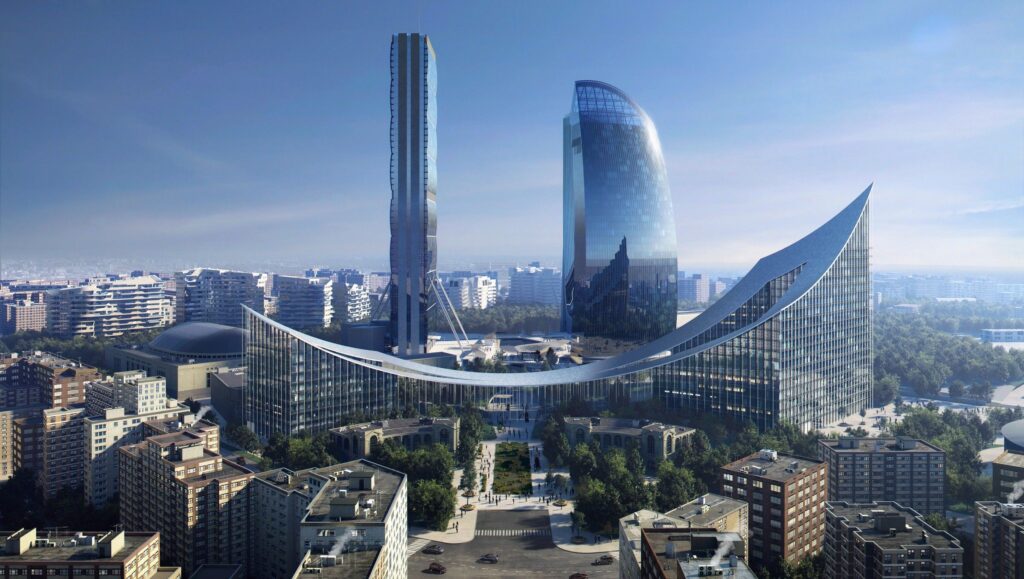
Places to Visit in Milan
Milan effortlessly combines old-world romance with modern technology. As the capital of fashion, food, architecture, and art, it’s a must-visit—not just for first-time travellers, but also for those who’ve lived in or explored Italy more extensively. Often overlooked in favour of more postcard-perfect destinations, this northern powerhouse offers countless reasons to make it a top stop on your Italian itinerary.
Piazza del Duomo: The Beating Heart of Milan
At the centre of Milan’s elegance and energy lies Piazza del Duomo—the city’s iconic cathedral square and its cultural epicentre for over 700 years. Spanning roughly 17,000 square meters, it’s not just one of the largest public squares in Italy, but also one of the most architecturally layered, surrounded by buildings from different centuries.
Originally designed in the 14th century and shaped further in the 19th under the guidance of architect Giuseppe Mengoni, the square has evolved alongside Milan itself. At its heart stands the majestic Duomo di Milano, with the Galleria Vittorio Emanuele II to the north, and landmarks like the Royal Palace, Palazzo dell’Arengario, and Palazzo Carminati framing the rest. The Arengario, once used for public speeches during the Fascist era, now houses a compelling museum dedicated to 20th-century art.
You could easily spend three days soaking in the details—unless you’re breezing through for photos and gelato, in which case a day might do. But don’t rush. From antique bookstores and vintage jewellers to elegant cafés tucked under centuries-old arches, the square offers more than just grand aesthetics.
A word of advice: finding a table during peak hours is practically a competitive sport. If you’re hoping to sip espresso with a view of the cathedral, a reservation (or serious luck) is highly recommended.
The Last Supper: Leonardo da Vinci’s Silent Masterpiece
Just a short stroll from Milan’s bustling centre lies Santa Maria delle Grazie, a UNESCO World Heritage Site and home to one of the most iconic works in Western art—The Last Supper by Leonardo da Vinci. This 15th-century Roman Catholic church and Dominican convent has weathered wars, time, and restoration, but still stands as a quiet sentinel of artistic genius.
On 15 August 1943, during World War II, Allied bombs devastated the convent, destroying much of the refectory. Miraculously, the wall housing The Last Supper survived, protected by sandbags and sheer luck. Today, the mural is preserved with the utmost care, and access is limited to ensure its longevity, making every visit feel like a rare privilege.
But what makes The Last Supper so revolutionary? Painted between 1494 and 1498 under the patronage of Ludovico il Moro, this mural captures the dramatic moment Jesus reveals that one of the disciples will betray him. Unlike traditional fresco techniques, Leonardo experimented with tempera and oil on gypsum, which, while groundbreaking, proved fragile. Over time, the painting deteriorated, but the emotion, composition, and storytelling remain untouched.
The mural is a study in human psychology, symmetry, and grace. Leonardo’s use of silver and gold foils, his countless preparatory sketches, and the expressive gestures of the apostles transformed a biblical scene into something transcendent—what his contemporaries described as “a painting that speaks.”
If you’re in Milan, seeing this mural isn’t just a bucket list item—it’s an encounter with genius.
Teatro alla Scala: Milan’s Iconic Opera House
Là Scala, or Teatro alla Scala, is one of the most prestigious opera houses in the world. Located near Piazza del Duomo and beside the Galleria Vittorio Emanuele II, it has been a symbol of Milanese elegance and artistic excellence since its opening in August 1778 as the Nuovo Regio Ducale Teatro alla Scala.
The current structure took shape in 1907, but the theatre suffered severe damage during World War II bombings in 1943. It was rebuilt and reopened in 1946 with a grand concert conducted by Arturo Toscanini. Since then, Là Scala has remained a world-renowned cultural landmark. It is particularly noted for its close ties to composer Giuseppe Verdi, whose operas often premiered on its stage.
In the early 2000s, architect Mario Botta led a major renovation, preserving its historic charm while enhancing its acoustics and technology.
Today, Là Scala is not just a venue but a living museum. The Là Scala Museum houses a rich collection of paintings, instruments, sketches, and costumes honouring the legends of opera—Giacomo Puccini, Gaetano Donizetti, Gioachino Rossini, Arturo Toscanini, and many more.
Whether you’re an opera aficionado or simply curious about Milan’s cultural heritage, a visit to Là Scala offers a glimpse into a world where music, history, and grandeur share the stage.
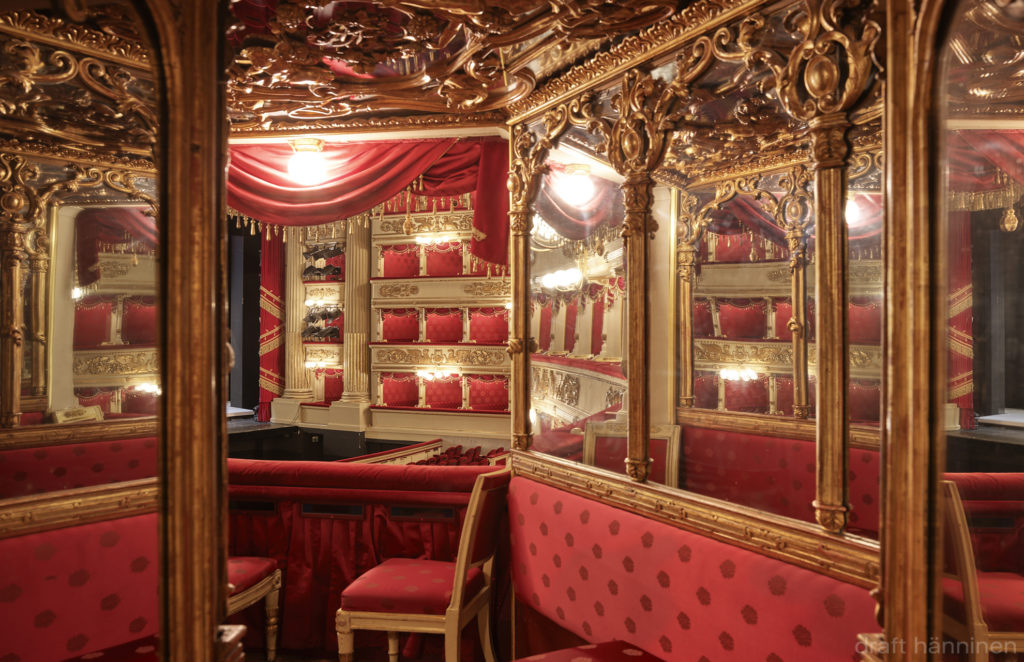
Brera District: Milan’s Artistic Soul
Tucked away in the historic heart of Milan, the Brera district is one of the city’s most charming and picturesque neighbourhoods. Known for its bohemian spirit and artistic heritage, Brera draws its creative energy from the prestigious Academy of Fine Arts and the acclaimed Pinacoteca di Brera (Brera Gallery).
The narrow cobbled streets of Via Brera and Via Fiori Chiari are lined with elegant cafés, boutique shops, and art studios. It makes the perfect place for a leisurely afternoon or an atmospheric evening stroll. On one Sunday each month, Brera’s flea market transforms the area into a lively showcase of local artists, antique vendors, and collectors. (Pro tip: ask locals or check online for the exact date during your visit.)
At the heart of the district, the Brera Gallery houses one of Italy’s most important collections of classical art. Set within the Fine Arts Academy, the gallery is always buzzing with students and art lovers. Masterpieces like Mantegna’s Lamentation of Christ and Raphael’s The Marriage of the Virgin are among its many treasures. Booking your ticket in advance is highly recommended, saving you time in queues.
Whether you’re browsing antique bookshops or sipping espresso in a tucked-away courtyard, Brera captures the quieter, more poetic side of Milan, where art isn’t just displayed, it’s lived.
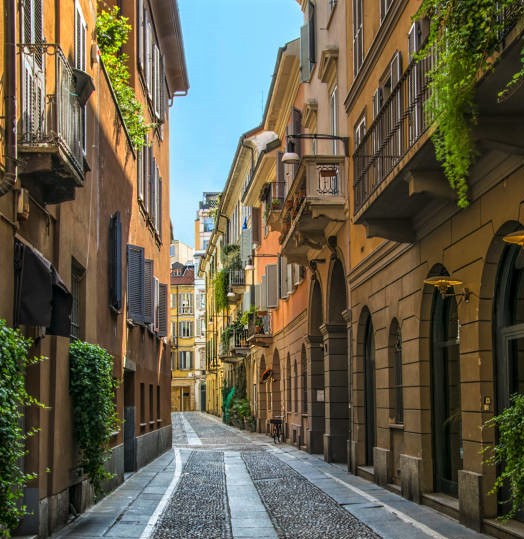
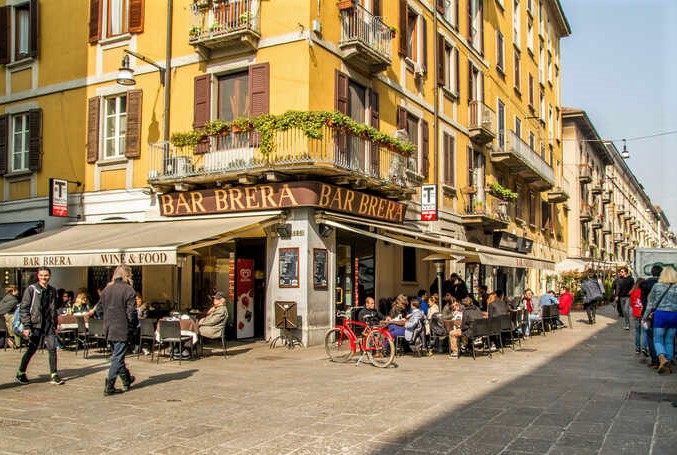
Castello Sforzesco: Fortress of Art and History
Just a short walk from the city centre, the Sforza Castle (Castello Sforzesco) is a grand 15th-century fortress built by Francesco Sforza, the Duke of Milan. It stands on the ruins of a medieval citadel. It has changed hands many times throughout history, especially before Italy’s unification.
After suffering damage during World War II, the castle underwent several restorations. In the years that followed, it housed the Modern Art Gallery and later became home to the School of Applied Engineering Art until 1999. Today, it remains one of the most impressive fortified structures in Italy—and one of the largest in Europe.
Originally a military stronghold, Castello Sforzesco has evolved into a major cultural and artistic hub. The complex now houses several museums, including two Archaeological Museums, one focused on Prehistoric artefacts and another on Egyptian antiquities. It also features extensive libraries and archives.
Inside the castle, you’ll find works by renowned artists like Tintoretto, Tiepolo, Filippo Lippi, Bronzino, Canaletto, and Andrea Mantegna. Additionally, the large area of the fortress serves for temporary courses, exhibitions, meetings, and conferences. Entry to the castle is free, but expect to pay a small amount for the museums.
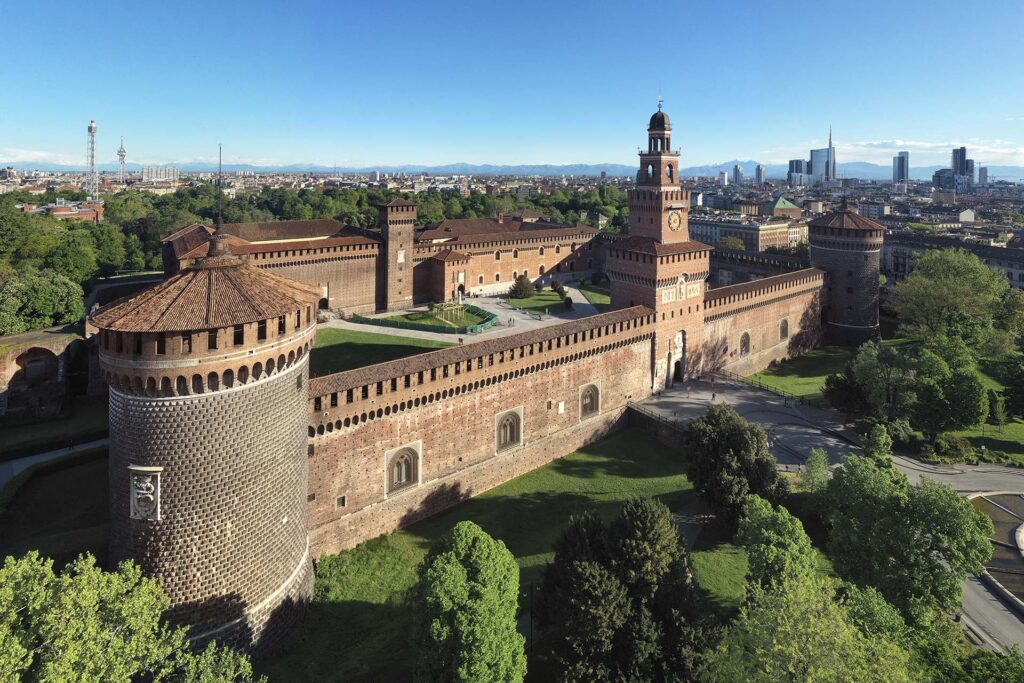
Aperitivo, Food & Flavour in Milan
No trip to Milan is complete without experiencing the aperitivo—Italy’s beloved pre-dinner ritual. Think of it as a stylish pause between day and night. You’ll find a spread of small bites like cheeses, cured meats, quiches, pizza slices, vegetables, and even mini pasta dishes.
Though the concept began in Turin in the 18th century with the invention of vermouth, Milan made it famous. In the 1920s, Gaspare Campari popularised the ritual by creating cocktails that became staples of Milanese evenings. The iconic Aperol Spritz is a must on a warm afternoon. Feeling bold? Try a Negroni Sbagliato—a bitter-sweet twist on the classic.
Milanese cuisine is rich, comforting, and rooted in the land. It blends mountain ingredients with farm-fresh produce and traditional techniques. Risotto alla Milanese is a local favourite—creamy, golden with saffron, and cooked just al dente. The flavour is elevated by lard or butter, parmesan, and a hint of broth.
If you’re a meat-eater, don’t leave without trying Cotoletta alla Milanese. It’s a breaded veal cutlet, fried to crispy perfection. Often compared to schnitzel, this dish has deep Milanese roots and a buttery bite.
From elegant aperitifs to hearty meals, Milan serves up tradition with a side of style. Whether you dine in a grand café or grab a quick plate at a local spot, the food here is as fashionable as the city itself.


